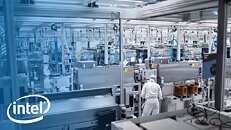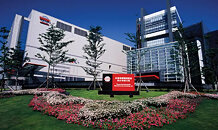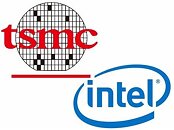
Intel Reportedly Ramps "Arrow Lake" Orders at TSMC Amid Internal Foundry Struggles
According to Taiwanese media Commercial Times, Intel is significantly increasing its outsourcing of "Arrow Lake" CPU production to TSMC, a strategic move as it grapples with persistent issues in its own foundry division. This decision to outsource a substantial portion of Arrow Lake's production is a significant shift in Intel's strategy, showing the company's rising reliance on external partners to meet quality and performance demands. The Arrow Lake Core Ultra 200 series is Intel's first major outsourcing initiative, in which Intel gave its core IP to third-party foundries, more specifically for a 3 nm node at TSMC. However, it clearly indicates the performance gaps in Intel's own Intel Foundry and the high demand expectations for the new CPUs. Originally intended to use Intel 20A node, Intel shifted focus of 18A node for its products and upcoming foundry customers.
Intel's recent orders with TSMC extend to its upcoming Lunar Lake chips and next-generation Falcon Shores AI GPUs, both of which will use TSMC's 3 nm process. Although Intel's 18A node remains promising, the company relies on current products to sustain its revenue streams, making TSMC's support crucial in ensuring timely shipments. This increased outsourcing reflects Intel's need to maintain competitive performance in the short term. Once its Foundry division meets performance and capacity targets, Intel aims to bring more CPU manufacturing back in-house. However, if anything goes wrong, Intel could face challenges securing sufficient volume from TSMC, as the foundry has longstanding commitments with major clients like Apple, NVIDIA, Qualcomm, and AMD.
Intel's recent orders with TSMC extend to its upcoming Lunar Lake chips and next-generation Falcon Shores AI GPUs, both of which will use TSMC's 3 nm process. Although Intel's 18A node remains promising, the company relies on current products to sustain its revenue streams, making TSMC's support crucial in ensuring timely shipments. This increased outsourcing reflects Intel's need to maintain competitive performance in the short term. Once its Foundry division meets performance and capacity targets, Intel aims to bring more CPU manufacturing back in-house. However, if anything goes wrong, Intel could face challenges securing sufficient volume from TSMC, as the foundry has longstanding commitments with major clients like Apple, NVIDIA, Qualcomm, and AMD.













